28 Best Abs Workout At Home
Overview
Welcome to the best abs workout, you can do at home! Achieving strong and toned abdominal muscles is not only about aesthetics but also essential for overall core strength and stability. In this workout, we’ll focus on a combination of exercises that target different parts of your core, helping you build a well-rounded and defined midsection.
Remember, consistency is key when it comes to seeing results, so try to incorporate this workout into your routine at least 2-3 times per week. And always pay attention to your form to prevent injuries and maximize the effectiveness of each exercise.
Let’s get ready to work those abs and get closer to your fitness goals from the comfort of your own home!
Here are some exercises that an individual should integrate into the routine workout
If an individual has chronic conditions, consult with the doctor before beginning any new exercise plan.
While executing the lower abs exercises, concentrate on employing the lower abs and challenging his/her self without exaggerating it.
Trial lower abs exercises safely by utilizing smooth, controlled movements. Always utilize appropriate forms of exercise.
Best Abs Workout At Home
Heel tap
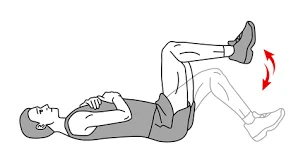
Lie down on the back with the knees bent at a 90-degree angle with the feet off the ground.
Holding the knees bent, lengthen one foot to touch the floor then return to the starting position.
Repeat each leg 10 times for a total of 20 repetitions.
Muscles targeted: Lower abs transverse abdominis
Lower leg
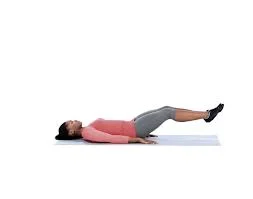
Begin with the legs at a 90-degree angle instantly beyond the head.
Gradually lower the legs four to five inches so the legs should even flow in the air and hold the leg lower position for 5 to 10 seconds.
Come back to the 90-degree angle and repeat the lower leg exercise for 10 repetitions.
Lower the legs until an individual feels his/her core muscles activate.
Muscle targeted: Lower abs transverse abdominis
Russian twist
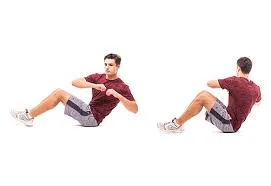
Sit up straight with knees bent 90 degrees and feet in front of the face.
Lift the feet approximately a foot off the ground and engage the core muscle.
Twist the whole upper body to one side either right or left, maintaining the legs in front of the face.
Perform 10 repetitions on each side either the right or left side
3 sessions per day
clasp a dumbbell with minimum weight and progress to maximum weight or a medicine ball for additional intensity for the progression stage.
Muscle targeted: internal and external obliques
Side plank with dips
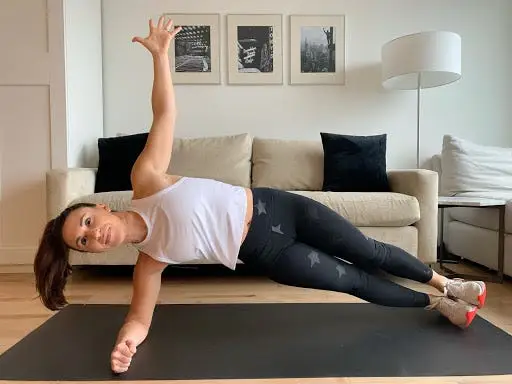
Position one elbow directly under the body and press yourself upward into a side plank position.
Lower the hip so that the person should balance just below the ground, then utilize the core muscle to come back to the starting position.
Repeat the side plank with the dips exercise on the other side.
Do 10 to 15 repitations3 sessions per day
Tip: Position the front knee downward to reduce strain.
Muscle targeted: internal and external obliques
Standing knee to hands
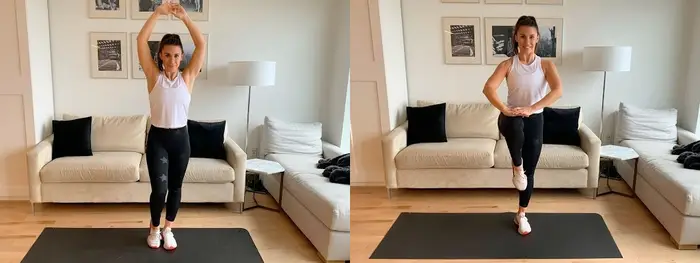
How to execute it:
Stand up straight with the arms overhead.
Lower the arms and position the knee up to meet the hands.
Perform the standing knee-to-hand exercise on the other side.
10 repetitions 3 times per day
Tip: Grasp a dumbbell or medicine ball for extra intensity.
Muscle targeted: Lower abs
Standing oblique crunch
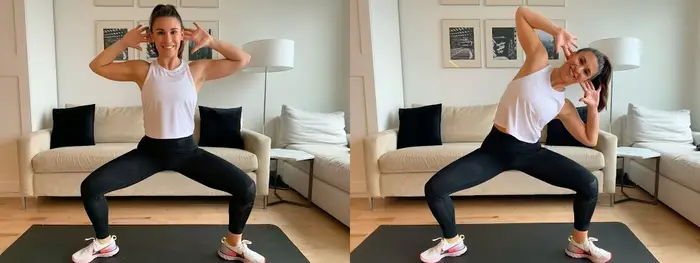
Stand up straight with the feet wide separated and lower into a wide-leg squat.
Position the hands behind the head and lower the upper body towards one knee and then the other knee.
Repeat the standing oblique crunch for a total of 20 repetitions, 10 repetitions on either side.
Muscle targeted: Obliques
Tuck-crunch-extend
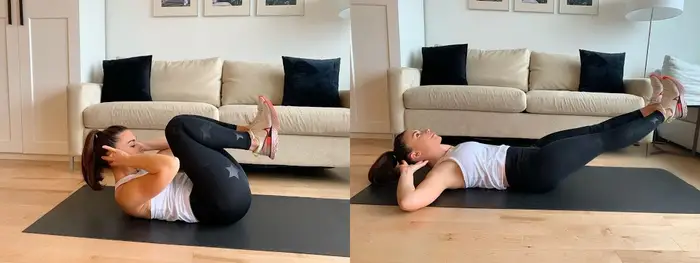
Lie on the back with the hands behind the head and the knees bent into the chest.
Extend the legs so that the leg should balance approximately a foot off the ground and preserve the tuck crunch position for a few seconds.
Come back to the beginning position and repeat the exercise 10 times.3 sessions per day
Muscle targeted: Upper and lower abs
Half sit up
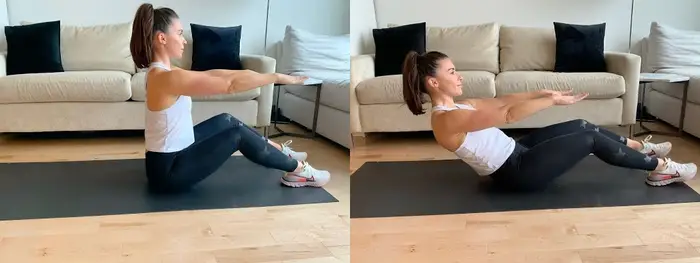
Sit up straight with the knees bent and the feet placed on the ground directly in front of the face.
Gradually lower the upper body four to five inches away from the feet and maintain the half sit-up position for five to ten seconds.
Come back to the beginning position and repeat the half-sit-up exercise ten times.
Move the feet nearer to the body to make the exercise easier or grab a dumbbell or medicine ball for extra intensity.
Muscle targeted: upper abs
Beast with shoulder tap
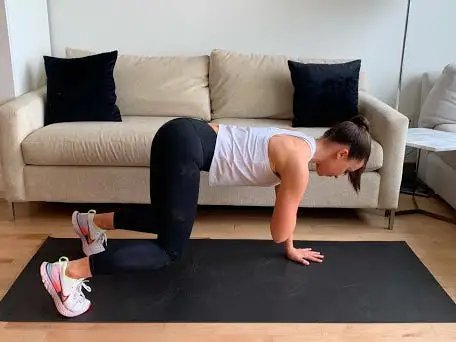
Bring on all four limbs then balance the knees and tibia bone just beyond the ground.
Maintaining the knees and tibia bone off the ground, tap the right hand to the left shoulder and then position the hand back on the ground. and perform the beast with shoulder tap
alter the beast with shoulder tap exercise on the other side.
Perform a total of 20 repetitions, 10 repetitions on each side, maintaining the knees and tibia bone off the ground for the whole time.2 sessions per day
Muscle targeted: Total core muscle such as rectus abdominis muscle, latissimus dorsi muscle, erector spinae, external oblique muscle, trapezius, transverse abdominis, internal oblique muscle, diaphragm, multifidus muscle, quadratus lumborum, Pelvic floor muscles
Bird dog with retraction
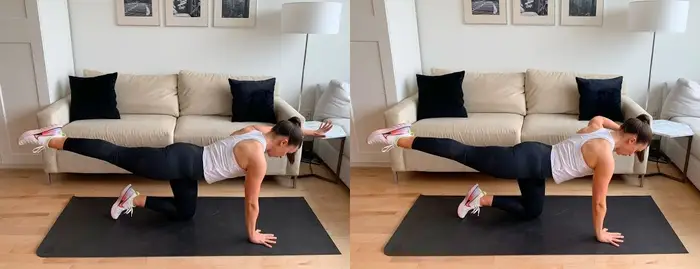
Position the hands and knees strongly on the ground.
Lift the right arm instantly in front of the body.
Lift the left leg so that the hip should parallel to the mat.
Once the person is stable, bend the lifted arm to a 90-degree angle then come back to the actual position.
Repeat bird dog with retraction movement 10 times on each side.
2 or 3 sessions per day
Muscle targeted: Total core muscle such as rectus abdominis muscle, latissimus dorsi muscle, erector spinae, external oblique muscle, trapezius, transverse abdominis, internal oblique muscle, diaphragm, multifidus muscle, quadratus lumborum, Pelvic floor muscles
Bicycle Crunch
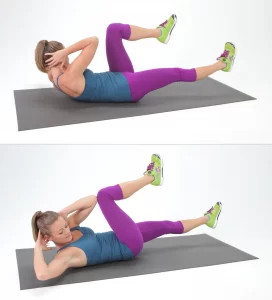
Lie down on the back with the hands back of the head. Lift shoulder blades off to the mat, lift the legs so knees should bend at 90 degrees, and look at thighs, maintaining a neck relaxed position. It is the beginning position.
grab the abdominals and turn the right elbow toward the left knee while lengthening the right leg to straightforwardly, lowering the abdominals as near to the floor as achievable without resting the legs on the mat. For this first rep, perform ten repetitions
come back to the beginning position, and repeat the bicycle crunch on the other side.
Perform 10 repetitions.2 sessions per day
Side Hip Bridge
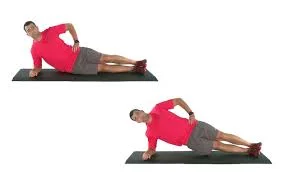
Begin by lying on the right side with the left foot on top of the right foot and right forearm on the mat, elbow under the shoulder. palm should be balanced with the fingers spread, and the left hand on the hip.
grab the obliques and lift the hips upward until the body creates a straight line from head to heels.
Break for one breath, then lower the side hip bridge position and come back to the normal position. That’s 1 repetition.
Complete 10 repetitions on the right side, then switch to the left side and repeat the same approach.
The muscle involved: hip abductors such as gluteus medius, gluteus minimus, tensor fascia latae
Reverse Crunch
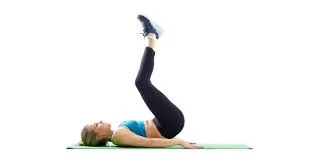
begin with lying on the back with hands by sides and legs lifted off the ground toward the ceiling, toes indicated to ceiling.
Push down into arms and grab the core muscles to lift hips off the mat.
Gradually return to the actual position.
Perform 10 repetitions 2 times a day
muscle involved: rectus abdominis
Seated Rotation
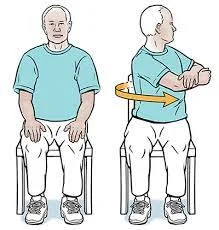
Sit on the chair, grab the hands in front of the chest, and tilt the upper body back until the abdominals should be grabbed with the legs bent and feet on the floor. for the progression to level up by bending and raising legs to a hang
Twist the body to the right side so that the right elbow should hang just off the mat.
Maintain the lower body still in that position while twisting the upper body to the left side until the left elbow is just off the mat.
comeback to the center position. follows the hand’s motion as the person moves.
Perform seated rotation for 10 repetitions.
2 or 3 sessions per day
Muscle targeted: Total core muscle such as rectus abdominis muscle, latissimus dorsi muscle, erector spinae, external oblique muscle, trapezius, transverse abdominis, internal oblique muscle, diaphragm, multifidus muscle, quadratus lumborum, Pelvic floor muscles
Air Chop
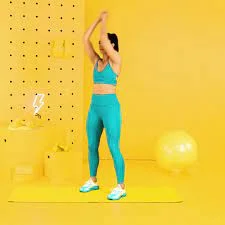
begin standing with feet slightly wider than hip-width separated. Arms must be raised beyond the head, elbows bent so that hands should be grabbed behind the body and biceps should look at the face.
grab arm muscles and, with control, swing arms forward and downward, controlling when arm muscles reach chest level.
come back gradually to a normal position. That’s one repetition. Complete 10 repetitions.
Bird Dog
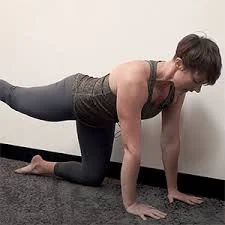
Kneeling on the floor or on an exercise mat. Position the knees and feet around hip-width apart.
Gradually lean forward and position the hands on the mat. set the hands directly under the shoulders. Maintain the hands shoulder-width apart, fingers facing forward. Take a camel pose with the knees directly under the hips another named tabletop position
Set yourself in a neutral position by strengthening the core muscles and stomach muscles. Attempt not to grab in any excessive arching and oversized of the back.
Gradually extend and straighten the left leg. Maintain the leg and hips parallel to the floor. If an individual has a partner, ask him/her to put a light bar across the hips, similar to the waist of the pants. If this would assist tell to the partner if the hips should rotate and the corrections that the person will require for alignment.
At the same time, gradually raise and straighten the right arm until it’s similar to the floor. Maintain both shoulders similar to the floor. Ask a partner to set a light bar across the shoulders to notice if the shoulders rotate.
Slightly lower the arm and leg back to the actual position.
Repeat the bird dog with the opposite limbs.
execute 10 repetitions,2 to 3 sessions per day
muscle targeted : gluteus medius,gluteus minimus,
abdominal muscles : rectus abdominis,internal obliques,external obliques,transverse abdominis
Back muscles:latissimus dorsi (lats), rhomboids, and levator scapulae. serratus posterior inferior and serratus posterior superior. transversospinalis,erector spine
Plank To T-Raise
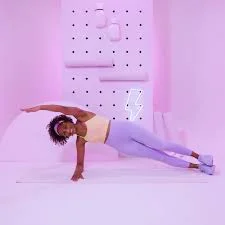
begin in a plank position with feet broader than hips.
Gradually flex elbows to lower chest toward the mat, maintaining hips, knees, and spine aligned.
Push via hands to lift up to full plank. Change by skipping the pushup.
Maintain toes in position but lower heels down to the right side until heels contact with the mat while circling the body to face the left side of the mat and raising the left arm into the air in line with the shoulder.
Come back to the actual position and repeat the plank to T raise on the other side. This one repetition. Complete 10 repetitions.2session per day
Muscle Targeted: upper back and shoulder muscles such as the supraspinatus, infraspinatus, trapezius, deltoid, teres major, teres minor, serratus anterior, levator scapulae, rhomboid major, rhomboid minor, triceps brachii, subscapularis
Plank-to-toe touch

begins in the plank position.
grab the lower abdomen and lift the hips to drag the body into an upside-down “V” shape while getting the right-hand backside to touch the left ankle. Heels remain high the entire time.
Gradually come back to the actual position. That’s one repetition. Perform 10 repetitions.
Repeat plank-to-toe touch on the opposite side. 3 sessions per day
muscle targeted: external obliques, internal obliques, pyramidalis, rectus abdominis, and transverse abdominis.
Hollow Hold
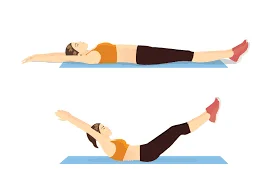
How to execute
begin lying on the back with arms and legs extended and on the floor.
Extend arms and legs, and move the hands slightly towards ear level and hips flexed approx 40 degrees, lower back on the mat so the body looks like a banana.
Hold the hollow hold position for 30 seconds.
the muscles involved: internal obliques, external obliques, quadriceps femoris, inner thighs, rectus abdominis, transverse abdominis, erector spinae muscle.
plank
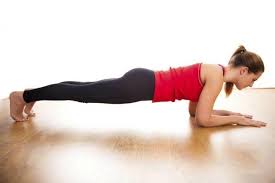
initiate with the hands and knees on the mat. Properly align the shoulders upward beyond the wrists, and make sure the wrists should align with the front of the mat. Turn the knees backward a few inches. Drag the belly button inside toward the spine as if there will fire on the mat and he/she should attempt to drag the stomach away from the fire. Fold the toes beneath and lift the legs upward off of the ground. Squeeze the quadriceps and contact the heels toward the back of the space. Make sure the shoulders should be beyond the wrists, and that he/she should be watching a few inches in front of the fingers to preserve the head and neck elongated. Hold for 30 seconds. Perform 10 repetitions
Muscle targeted: trapezius, pectoralis major, pectoralis minor, serratus anterior, rhomboid major, rhomboid minor, deltoid, biceps brachii, triceps brachii,latissimus dorsi
Mountain climbers

Initiate in the plank position, maintaining the back straight, the hips low and the abdominals grabbed. Move the right knee under the chest toward the right elbow. Come back the right leg back to the plank position; move the left leg under the chest toward the left elbow. Repeat, rotating the legs and maintaining a constant speed. Recognize breathing and attention to grabbing the abdominals, glutes, and hamstring muscles.
muscle targeted: shoulder, triceps, core muscle such as internal obliques, external obliques, transverse abdominis, erector spinae, quadratus lumborum, psoas minor, rectus abdominis, multifidus, longissimus, trapezius,pyramidialis, pelvic floor, diaphragm, quadriceps, hamstring
scissor kicks
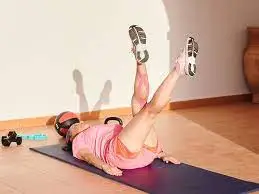
Lie on the back with the legs straight up toward the ceiling. Allow the arms to rest down at his/her sides. The person should also set his/her hands under the buttocks for raised stabilization. Squeeze the abdominals and lower both of the legs 6 to 12 inches down to around a 45-degree angle. Raise one leg upward and lower the other leg toward the floor exchange legs. Continue to rotate, thrusting the legs in a flutter movement. Repeat scissor kicks for approximately 15 repetitions, and make sure not to speed upward as he/she should move.
muscle targeted: core muscles such as internal obliques,external obliques,erector spinae,transverse abdominis,quadretous lumborum,psoas minor,rectus abdominis,multifidus,longissimus,trapezius,pyramidialis,pelvic floor,diaphragm,gluteus medius,gluteus minimus,quadriceps,adductors such as adductor longus,adductor brevis,adductor magnus,gracilis
side reaches
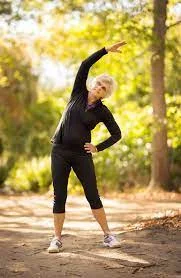
side reaches move works the lower abdominals muscles. Stand with the feet hips-distance separated and the arms at the sides. Position the right hand on the back of the head as he/she should for a crunch. Initiate rotating the body lower toward the left side, squeezing the left obliques, so that the right elbow arrives up toward the sky. Get the left hand down toward the ground. Maintain side reaches the position for 30 seconds, pressing the abdominals, then changing sides.
Perform 5 repetitions in 2 sessions per day
Muscle targeted:latissimus dorsi
windshield wipers
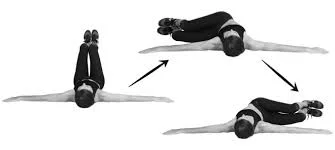
Lie on your back with the arms straight out at the sides creating a “T” shape with the body. Raise the legs off the ground and bend the legs into a tabletop position with the tibia similar to the floor. From this position, gradually lower the legs to the right balancing a few inches off of the floor, utilizing the abdominals to hold the movement. When the knees get near to the floor, change the movement of the legs, thrusting the leg back via center and down to the left side of the body. Repeat, moving side to side for a total of 20 repetitions,10 repetitions on each side
Muscle targeted: obliques, rectus abdominis
toe reach
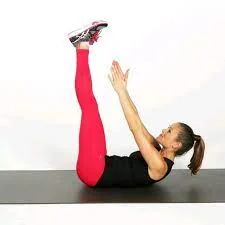
Lying down on the back, reach the legs straight up so the feet should arrive toward the ceiling. For a modification, the person should gradually bend the knees. As he/she should begin to exhalation, tighten the upper abdominals and bend the head, neck, and chest off the ground as he/she should reach the arms toward the toes. Repeat 20 times,2 sessions per day
Muscle targeted: transverse abdominis, rectus abdominis, obliques
v sit
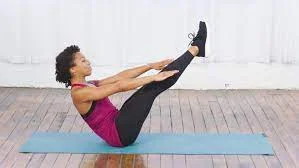
Seated on a mat, grab the abdominal muscles and slightly lean back a couple of inches. Gradually lift the legs up in the air so that the leg should be in a table-top position. Reach the arms straight out in front of the face so that the arm should be similar to the mat. preserving the abdominals grabbed, extension motion of the legs straight up to a 45-degree angle, creating a V shape with the body. If the person should feel balanced here, try to reach the arms upward toward the ceiling. He/she should always have the option to leave arms straight out in front of the face. Hold the v-sit position for 10 seconds. preserve the shoulders relaxed, abdominals pulled in and the inner thighs squeezing together. Release the legs and arms down to the beginning position.
Muscle targeted: internal obliques, external obliques, rectus abdominis, hip flexors such as psoas major,iliacus, sartorius, rectus femoris
open leg rocker
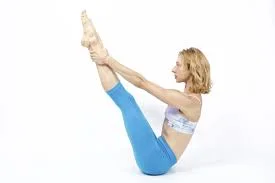
Sit up with the back straight, the knees bent, and the feet flat on the ground. gradually engage the ankles and lift the legs into the air, marking the toes toward the ceiling, so that the body creates a “V” shape. Remember to keep the legs open as broad as the hips. Roll backward onto the shoulder blades, preserving the abdominals engaged. Roll back upward and straighten the back while maintaining the legs straight up and open. Repeat, rolling front and back, taking a break at the top every time.
Muscle targeted: transverse abdominis
standing crunch
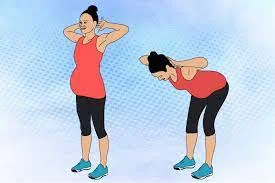
Executing crunches while standing should support the person to neglect the back and neck discomfort that must be experienced when executing the traditional crunch. Stand with the feet shoulder-width separated and squeeze the abdominals, bringing the belly button toward the spine and the hips forward. set the hands behind the head and execute a crunch, bringing the shoulder and head down toward the floor. Be sure to maintain the space between the chin and chest, and maintain the elbows out to the sides to avoid pulling the neck. Reverse the move, and come back to an upright standing position. Repeat 10 times.2 sessions per day
muscle targeted: serratus anterior, quadratus lumborum, internal external obliques, rectus abdominis
ABS workout safety considerations
When executing any workout program, there should always be precautionary tips to keep in mind. Lower abdominal exercises should no difference. Before initiating a lower abdominal workout, an individual might want to consider safety tips:
- Speak with the doctor before beginning a new workout program if the person hasn’t managed any health conditions.
- Warm up before initiating a workout.
- concentrate on form.
- just do as many repetitions as an individual should maintaining an appropriate state.
- Stop if its movements hurt.
- Eating a balanced, nutrient-dense diet should go a long way toward a strong and toned abdominal, too.
- Get plenty of rest, stay hydrated, and attempt to do a few types of physical activity per day, even if activities should not only be for a few minutes.
consult with the doctor before initiating any new exercise program. This is necessary if an individual has any medical conditions or requires medicines.
Strengthening the abdominal muscles should improve posture, and balance, and assist the person in neglecting sports-related injuries. To create powerful abdominal muscles, execute three sets of abdominal attentive exercises two to three times a week.
However, it’s necessary to do abdominal workouts in complement to other strength-building exercises. making strong abdominal muscles means making lean muscle tissue throughout the person’s whole spine, which is the region below the shoulders to the tops of the legs. This means combining back-strengthening exercises as well.
FAQs
How long should it take to get abs with the home workout?
Depending on the current body weight, genetics, and strategies for nutrition and exercise, burning that fat might bring 6 months or more than 1-to 2 years even if the person obeys a strict diet and exercise routine. Most people require to lose at least fifty percent of their body fat for their abdominals to be observable.
should an individual truly get abs from home workouts?
Yes, there’s no better route to burn the core muscle than with one of the best abs workouts at home. A satisfactory abdominal workout at home contains exercises that aim at all four of the major muscle groups in the waistline muscle such as the transverse abdominis, rectus abdominis, internal obliques, and external obliques.
should an individual do just an abdominals workout daily?
Although the person should clearly work out abs every day, in most cases, accomplishing targeted abs exercises every day should generally not be perfect. just like all muscle groups, the abdominal muscles want time to rest and heal after exercise in addition to repairing and reconstructing back stronger.
What is the best path to develop abs fast?
Concentrate on the abdominals. Some of the exercises to prioritize for strengthening the abdominals involve crunches, planks, and bridges. These three exercises should be the most commonly utilized exercises, and the abdominals should be a good site for the person to get initiated
Should abs develop naturally?
Many people think that six-pack abs are just meant for the genetically blessed. But the truth is, everyone, should technically be talented in gaining abs because all have abdominal muscles naturally, it needs time, discipline, and hard work to expose the abdominal.
should the person perform an abs workout after eating?
While it’s commonly not needed to wait until the food should totally be absorbed before exercising, it’s best for abs to provide some time for the food to relax in the stomach. For most people, one to two hours should be adequate after a moderate-sized meal, while postponing at least thirty minutes after a snack must be good.
should females do abs workouts during periods?
There is no scientific explanation for missing out on the daily workout during the periods unless the person has intense symptoms. Many doctors will advise that exercise might be beneficial to the body for a period of time. So, listen to the body and start light exercises to calm the body and mind
Start ab workouts assist with cramps?
gluteus and abdominal exercises should be specifically valuable as those muscles improve blood flow to the pelvis which aids in flushing away prostaglandins, the major cause of contractions of the uterine muscles and therefore pain.

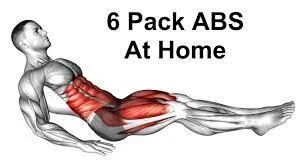
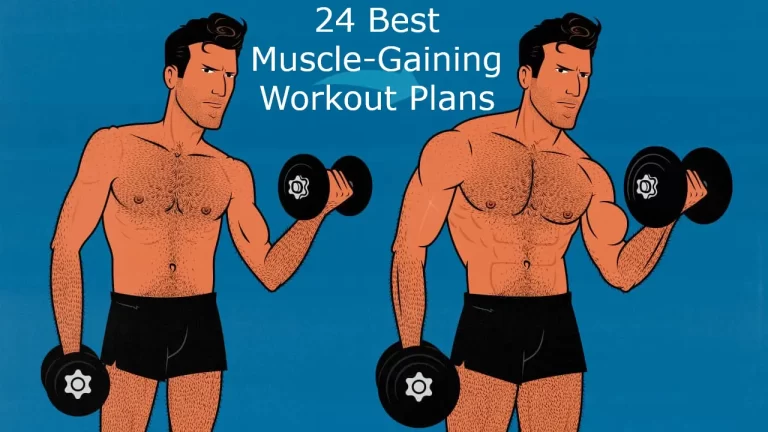
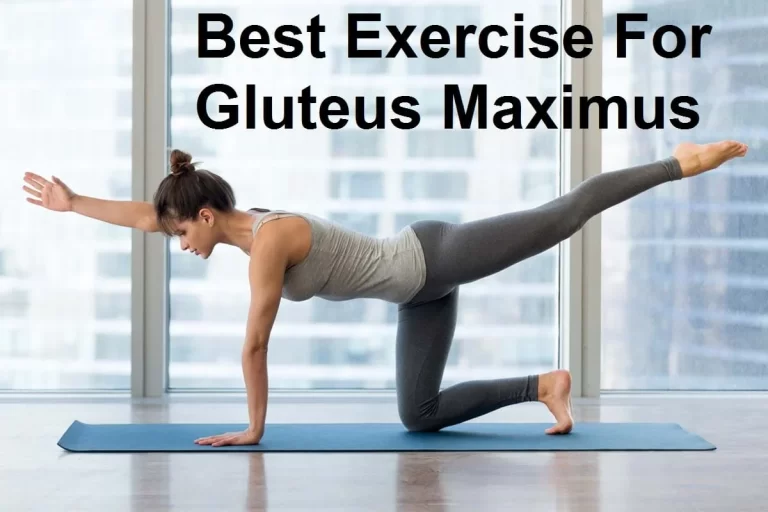
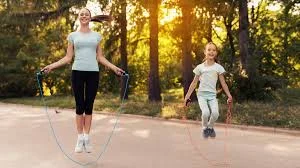
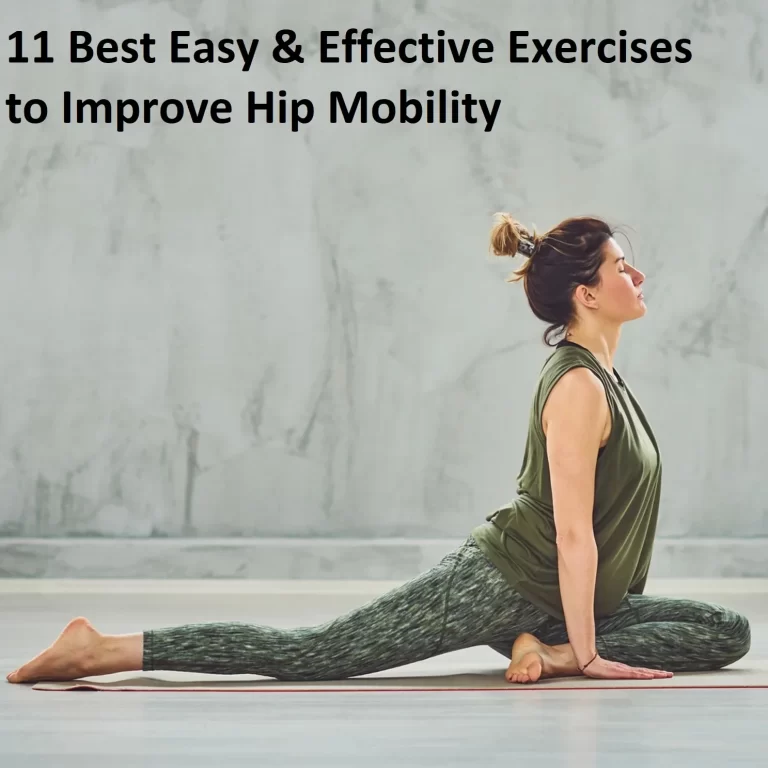
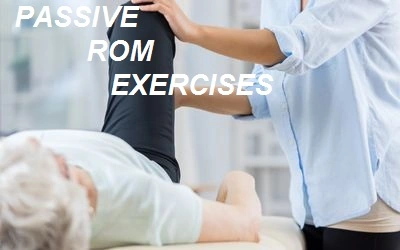

3 Comments